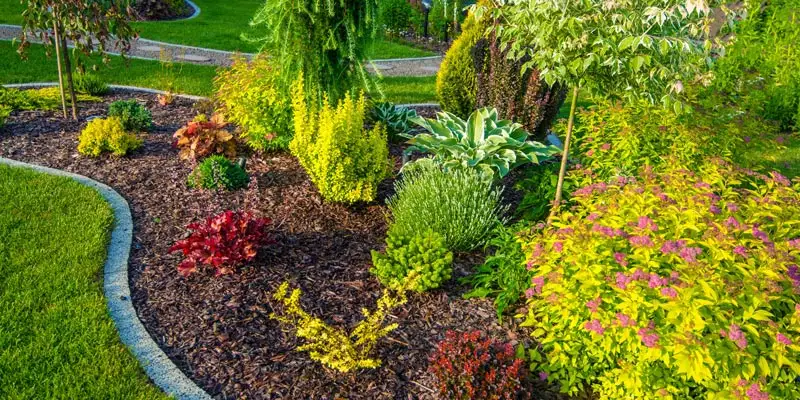The 15-Second Trick For Landscape Design
The 15-Second Trick For Landscape Design
Blog Article
Landscape Design - The Facts
Table of Contents10 Easy Facts About Landscape Design ExplainedAll about Landscape DesignSome Ideas on Landscape Design You Need To KnowNot known Details About Landscape Design How Landscape Design can Save You Time, Stress, and Money.
A backyard can usually be separated right into three locations: public (the front yard), private (the back backyard), and service (generally the side lawn). The place of activity areas depends mostly on the kind of area, the size of space required, the type of activity, and the desired proximity to various other tasks and structures.The outdoors wall surface of the home often works as the initial wall surface or starting factor of an exterior room. Incompatible uses need to be divided, and associated tasks, such as cooking and dining, should be put together to make the backyard much more reliable and enjoyable. When making use of hardscape to develop rooms, make use of building and construction material comparable to that utilized in your house for continuity from the residence right into the garden.
Linked areas. Credit Scores: Gail Hansen, UF/IFAS Making use of comparable hardscape features and repeating plants draws the eye around the yard. Essential points along the road can be emphasized with growings or features that attract interest and urge motion in a specific instructions. Relocating along the path takes an individual from one area to the following and allows the customer to have a variety of experiences.
Unknown Facts About Landscape Design

For mental comfort plants are utilized as physical or implied obstacles for personal privacy and safety. Physical barriers block both the sight and accessibility to a space and consist of fences, walls and plant hedges. Suggested obstacles, typically low growing plants, block gain access to however not the sight (Number 9). Various other functions of plants consist of cleansing the air, avoiding erosion and soil loss, maintaining dampness in the dirt, and returning natural issue to the dirt.
Physical and suggested barriers. Credit Score: Gail Hansen, UF/IFAS For these reasons, the kinds of plants to be used (such as trees, shrubs, or groundcovers) should be chosen in the beginning of planning (Landscape Design). Plant kinds are chosen for their useful capacities to make sure that their future purpose and required space can be thought about at the same time

Excitement About Landscape Design
Each plant mass remains in front of, behind, or beside, an additional mass. Figure 11. Straight plant layers. Credit: Gail Hansen, UF/IFAS Number 12. Vertical plant layers. Landscape Design. Debt: Gail Hansen, UF/IFAS Repeating plants within a mass and repeating masses with similar plants ties the garden with each other. The a fantastic read individual plant features need to be thought about to successfully layer and mass plants.
All plant structures start with the main structure plants, the huge, mostly evergreen background plants-such as the trees and huge hedges. These plants different or enframe spaces, manage the dimension of the space, and offer the beginning point for picking the appropriate attributes of the 2nd layer, midground plants, for massing and infill.
Important factors in the yard need to be highlighted by the use of special plants, distinct frameworks, or garden ornaments. Marking thresholds or entryways to areas can be made with gateways, arbors, and actions, or through making use of one-of-a-kind and vibrant plants. The form and/or style theme of the yard will frequently assist figure out the essential factors and just how they ought to be highlighted.
Various other essential locations in the yard are centerpieces, which is used to visually arrange a landscaped location. The type of centerpiece typically relies on the watching perspective. Various perspectives or point of views can reveal various compositions in the landscape that may call for a range of focal points. Contrasting structure, shape, size and shade will certainly capture and hold the eye.
The Only Guide for Landscape Design

Figure 13. Plant kinds. Credit Rating: Gail Hansen, UF/IFAS After form, texture is the following leading feature of a plant; rugged, tool and great textures can be used for comparison and emphasis in the landscape. Kind and appearance both trump shade in the garden for a lot of the year. Throughout particular periods, color will certainly be the most obvious characteristic of the garden.
The pleasurable scent of plants, the sound of wind in the trees, the sound and structure of water, and the colors and textures of sculptures, pots and garden furnishings all include in the experience of the yard. One view website detail that is frequently forgotten is the impact of light on the visual appeals of the plants.

Landscape Design for Dummies
It is essential to recognize the ultimate fully grown dimension of plants so they can be positioned in the right place and spaced correctly when they are installed. Giving plants area to expand is a challenge because the typical mature size is typically based on ideal growing conditions and the ecological problems of a website may create a plant to expand larger or stay smaller sized.
Report this page